Agility and quick releases have been the cornerstone of the evolution of the IT industry. As the demand for various features increased, the size and complexity of applications also grew. In these circumstances, deploying quickly and ensuring faster releases was a huge obstacle. It gave birth to the concept of containers. The last few years have seen a massive acceleration in container adoption, making it a mainstream technology.
Looking at the bright future of containerization, we have dived deep into the application container market and curated a report by collecting information from reputed sources like Mordor Intelligence, RedHat, CNCF, Datadog, Gartner, and many more, to unravel a few of the mysteries of the state of containers.
Key takeaways:
- At 46% Containerization, is the topmost software development priority for developers across the globe.
- By 2023, 70% of organizations will effectively run two or more containerized applications.
- North America is the largest, while the Asia Pacific is the fastest-growing application container market worldwide.
Now, to make it easier for the audience to understand the context of these statistics and how we reached a particular conclusion, let us explore the curated report in detail to find some hidden gems related to the container market that you need to know.
1. Top priority for software developers around the world
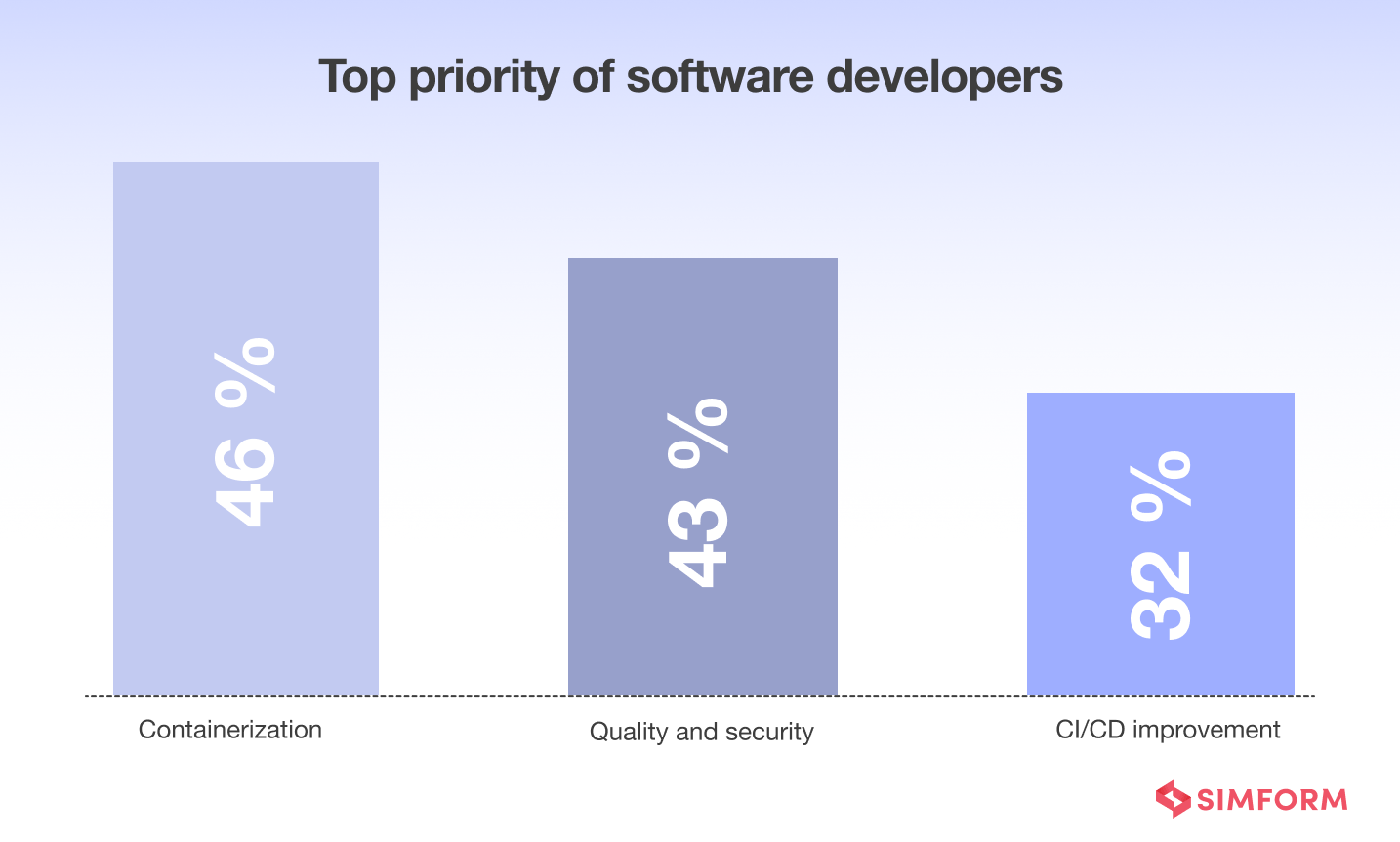
Containerization (46%)tops the list, followed by quality and security (43%) and CI/CD improvement (32%).
2. The rise of container market share
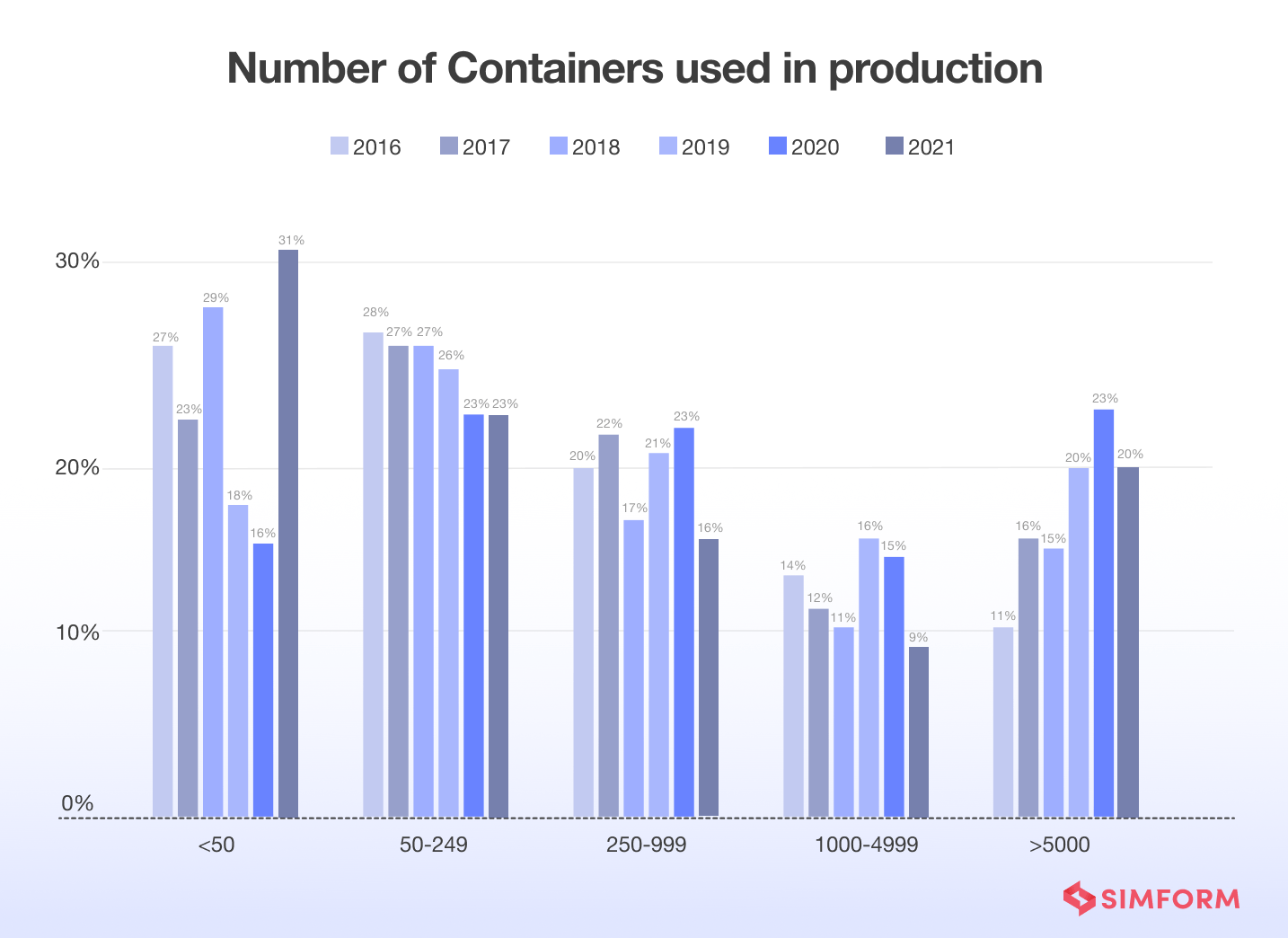
In 2021, organizations using over 5,000 containers expanded by 82% from 2016, while those using over 1000 containers rose 52% in the same period.
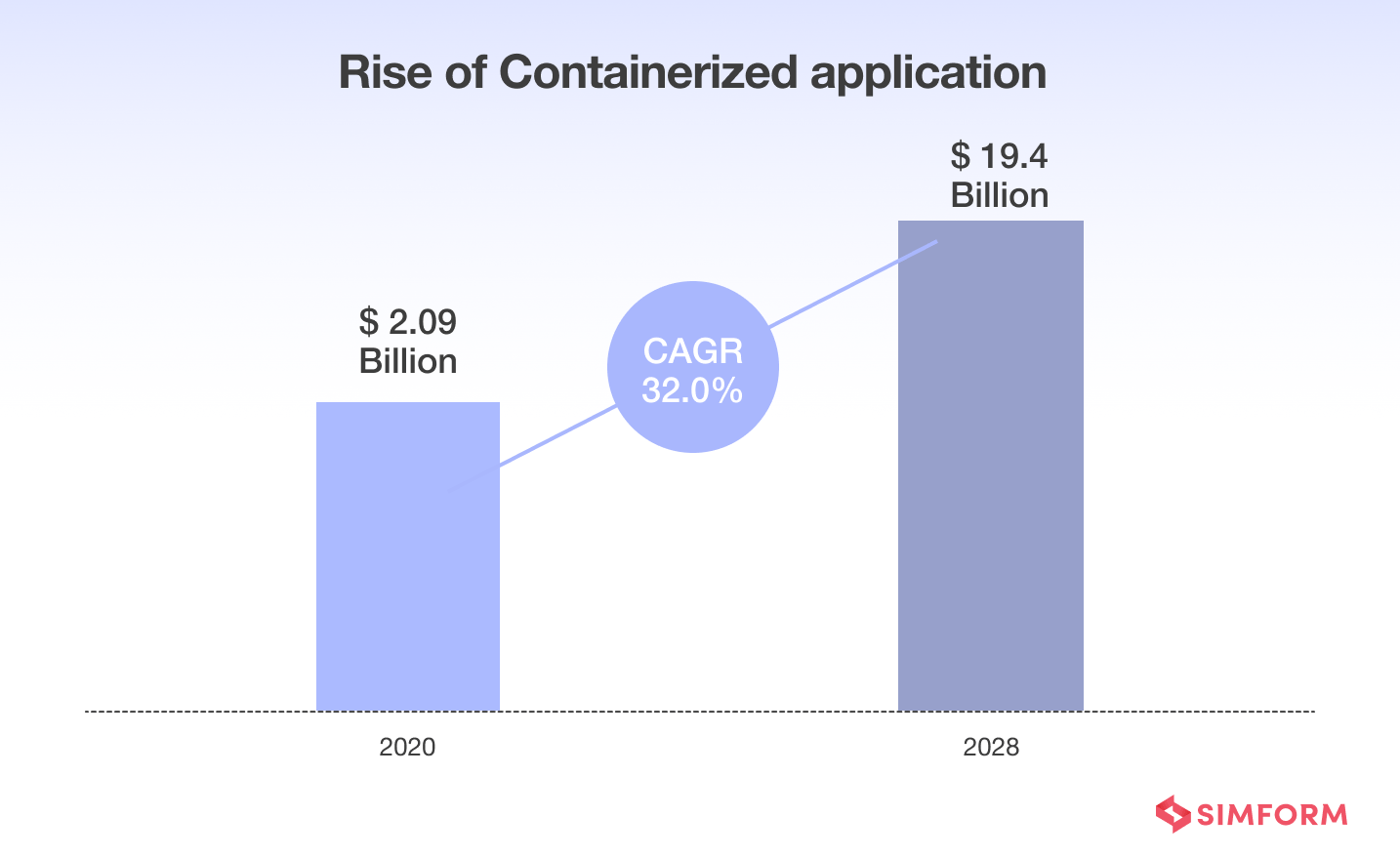
The application container market will grow at a CAGR of 32% over the forecast period 2020 to 2028.
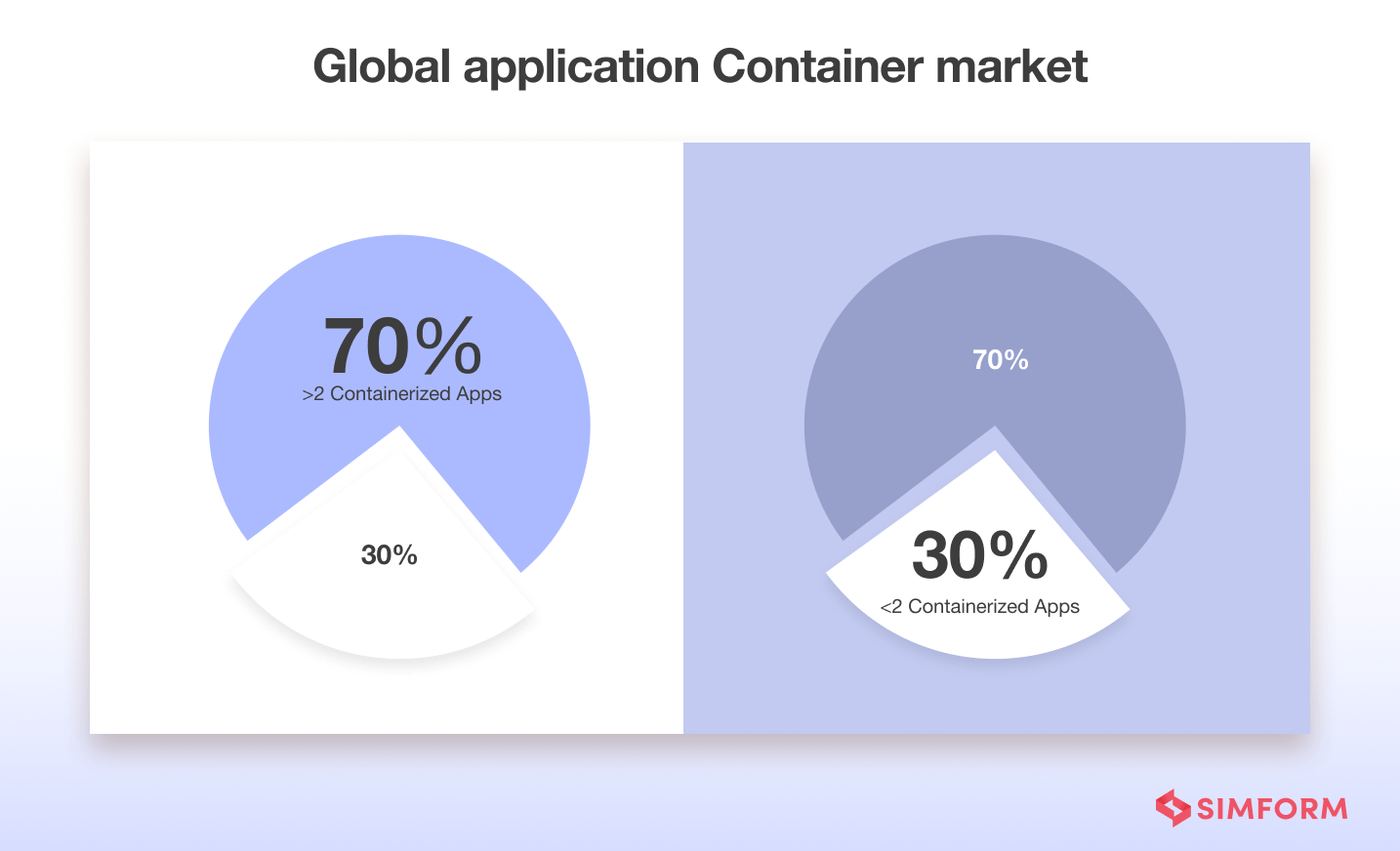
By 2023, Gartner predicts that 70% of organizations will run more than two containerized applications.
3. Global container management revenue
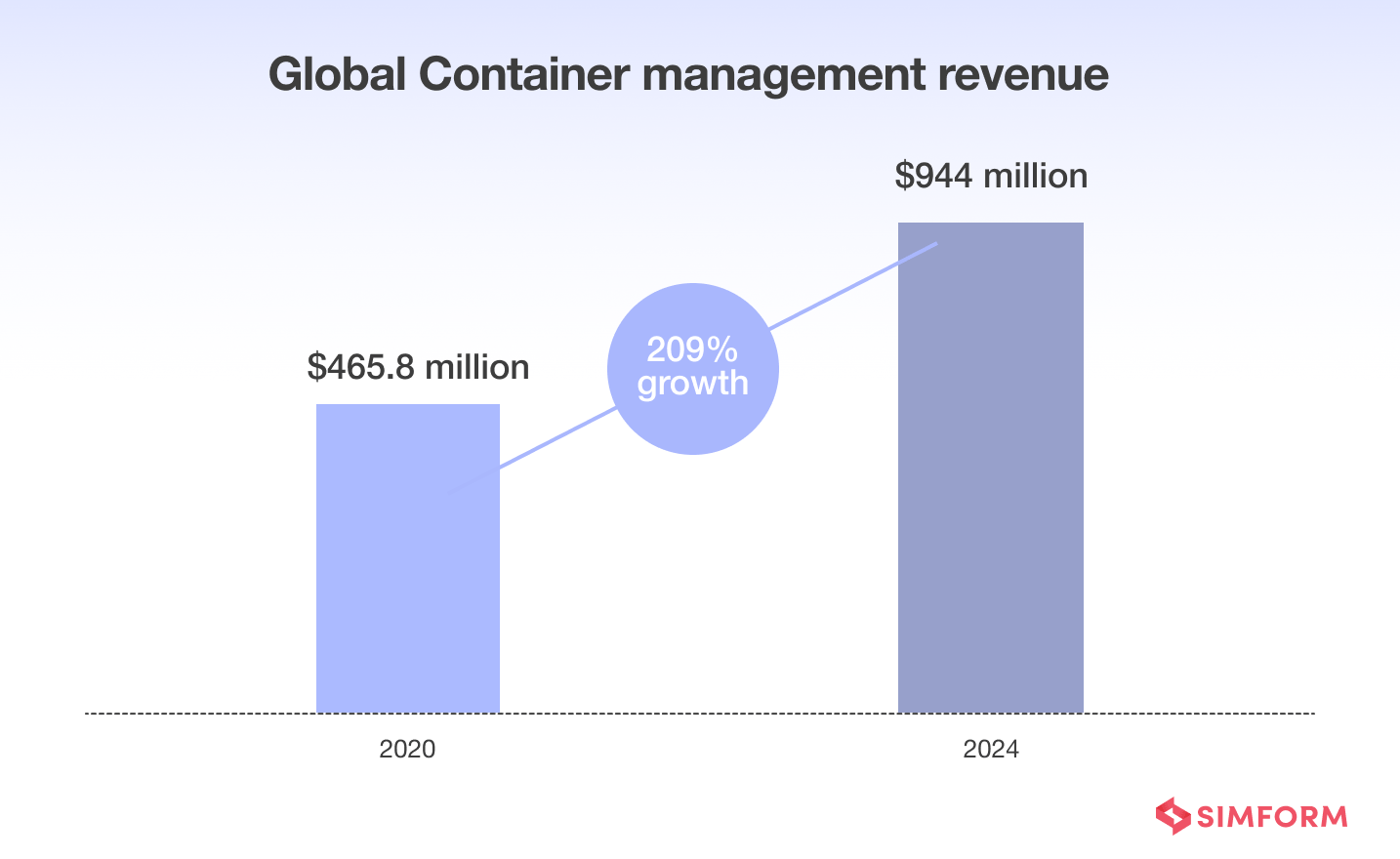
Worldwide container management revenue will grow from a small base of $465.8 million in 2020 to $944 million in 2024.
4. Application container market growth rate by region (2020-2025)
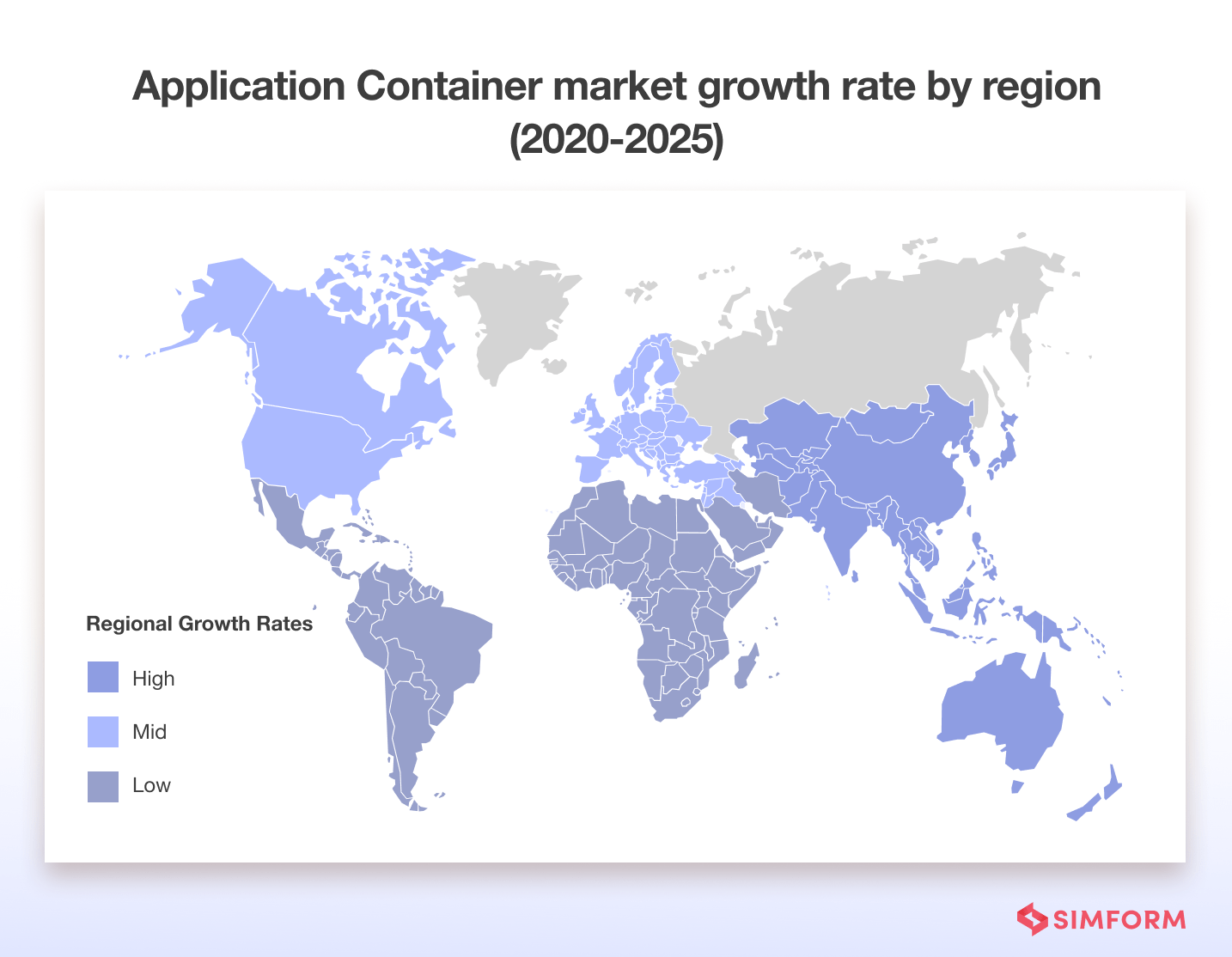
North America is the largest, while the Asia Pacific is the fastest-growing application container market.
Between 2020 and 2025, Asia Pacific (China, India, Japan, etc.) will be the highest growing containers market, while Middle East & Africa (UAE, Saudi Arabia, South Africa) and Latin America (Brazil, Argentina, Mexico), will be the slowest growing regions.
5. Major players in the container market
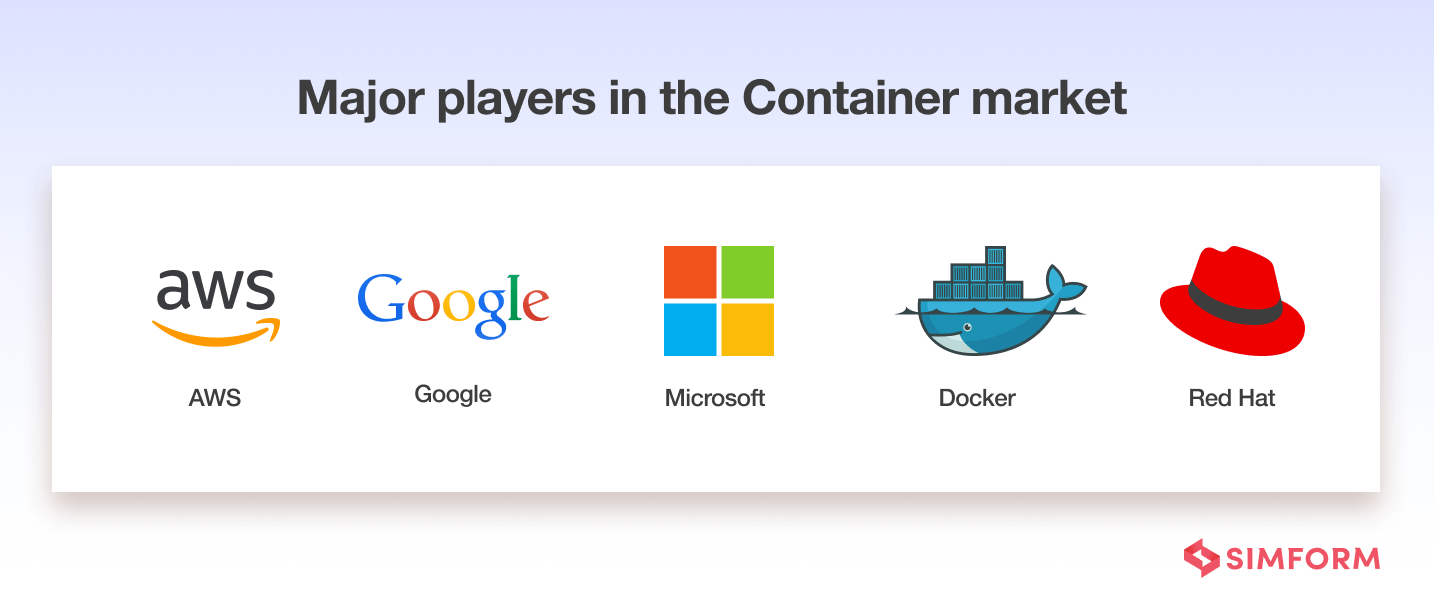
AWS, Google, Microsoft, Docker, and Red Hat are the top five players dominating the container market.
6. Technical and business benefits of containers
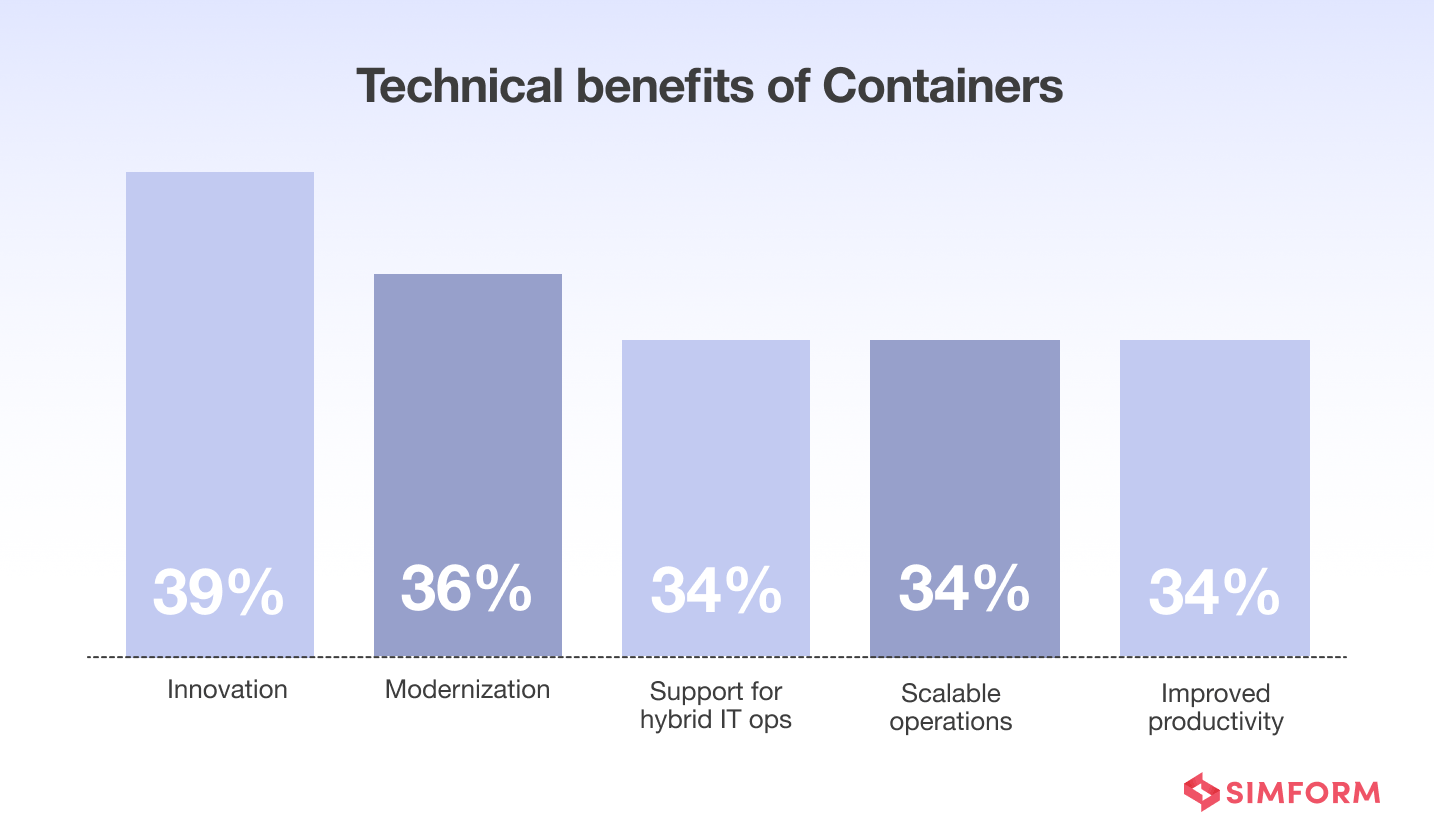
As per Redhat’s report on Containers and Kubernetes 2021, the top technical benefits of containers are as follows:
- Innovation (39%)
- Modernization (36%)
- Support for Hybrid IT ops (34%)
- Scalable Operations (34%)
- Improved Productivity (34%)
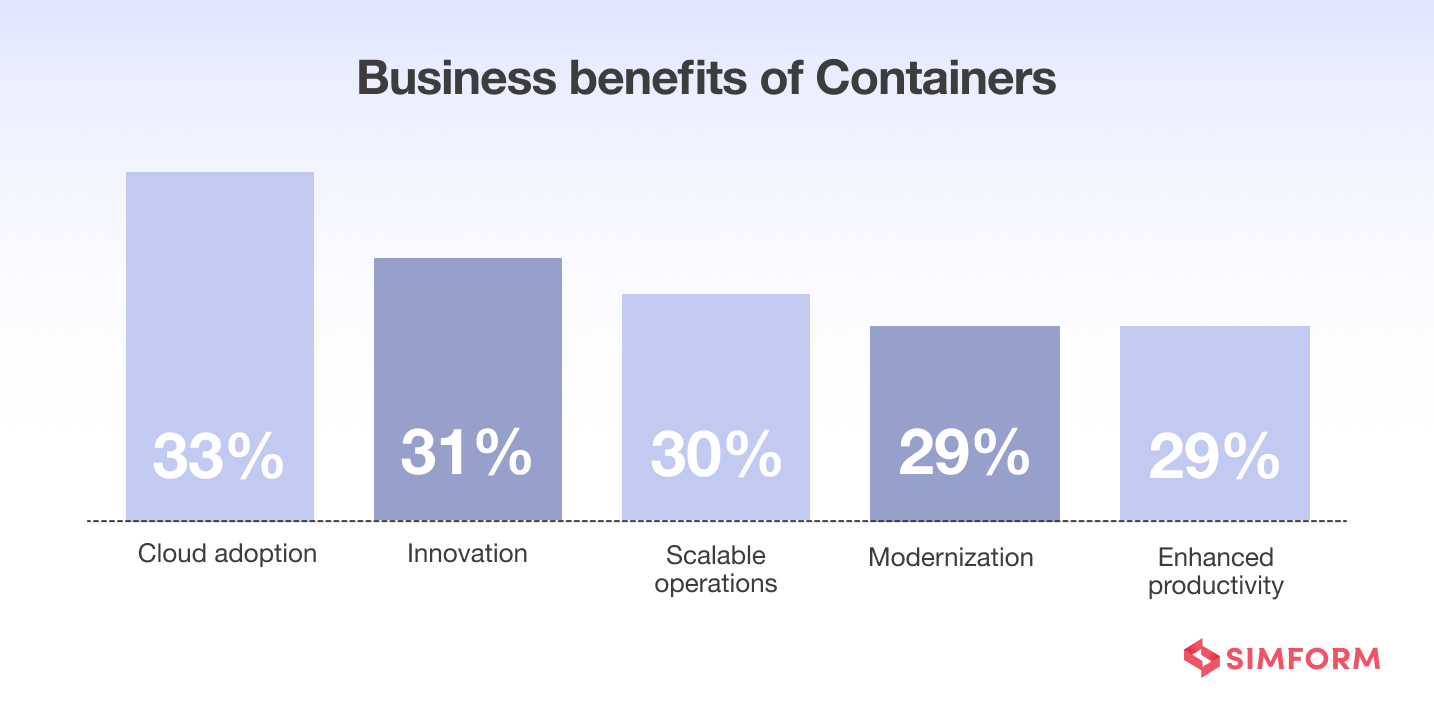
According to Redhat’s survey, the top business benefits of containers are as below:
- Cloud Adoption (33%)
- Innovation (31%)
- Scalable Operations (30%)
- Modernization (29%)
- Enhanced Productivity (29%)
7. Common use case of containers
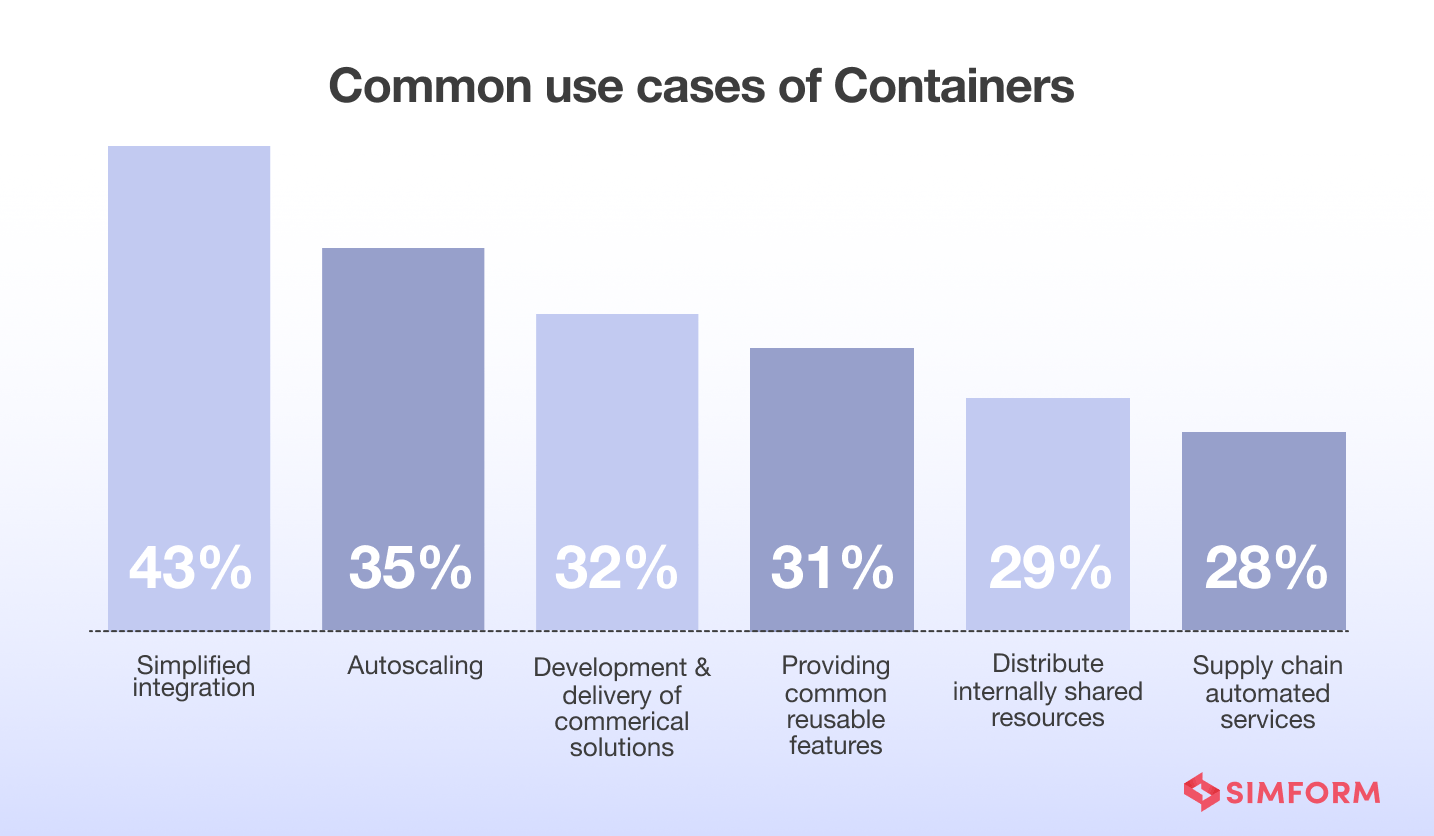
Redhat’s survey published on containers and Kubernetes suggests that the top use cases of containers are as follows:
- Simplified Integration (43%)
- Autoscaling (35%)
- Development & Delivery of Commerical Solutions(32%)
- Providing Common Reusable Features (31%)
- Distribute Internally Shared Resources(29%)
- Supply Chain Automated Services (28%)
8. Top barriers to container adoption
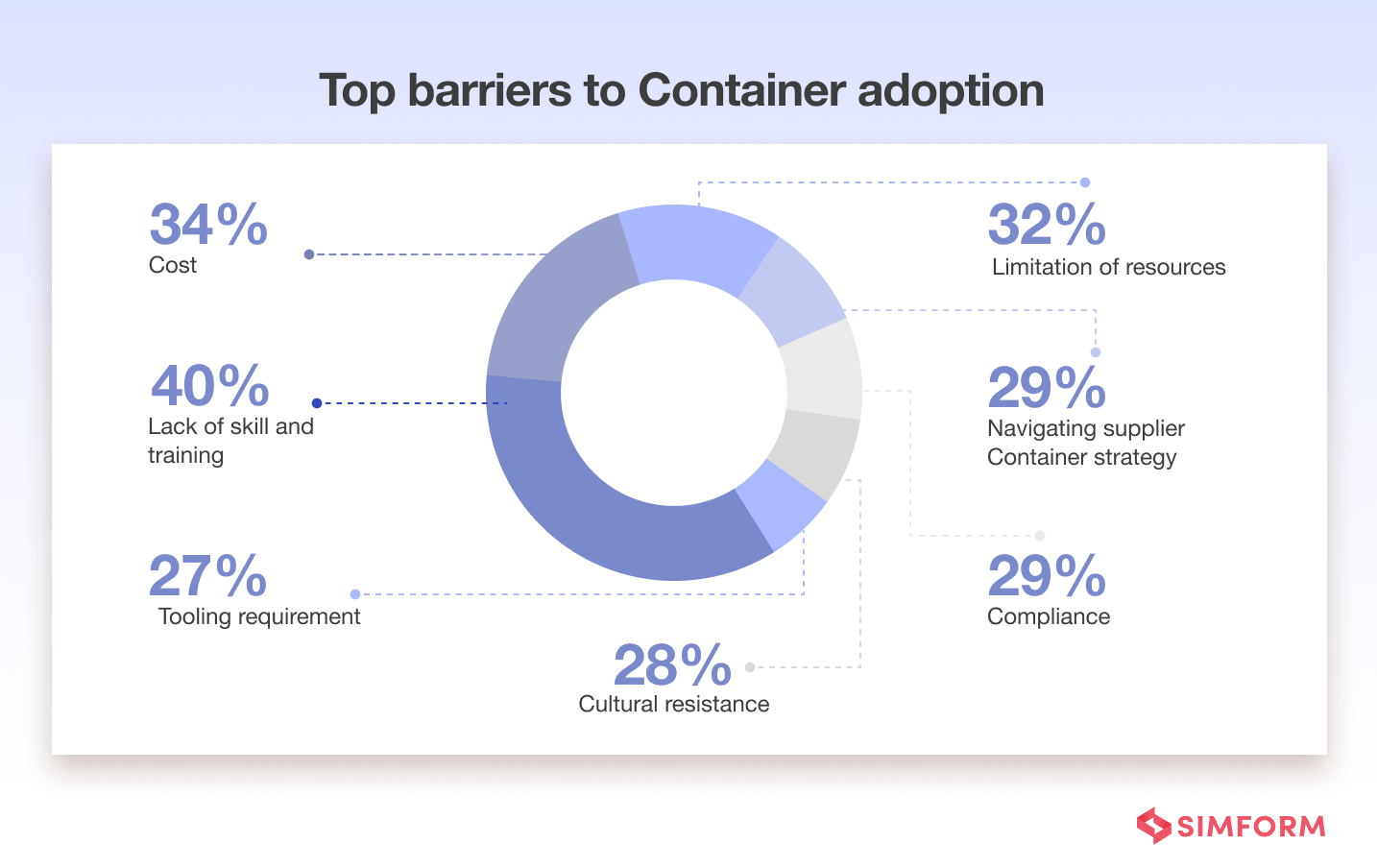
The top barriers to broader adoption of containers, according to Redhat’s report, are as follows:
9. Top container images

Nginx (52%) is the topmost container image utilized by various organizations, followed by Redis (35%) and Postgres (20%).
10. Kubernetes has become a mainstream container technology
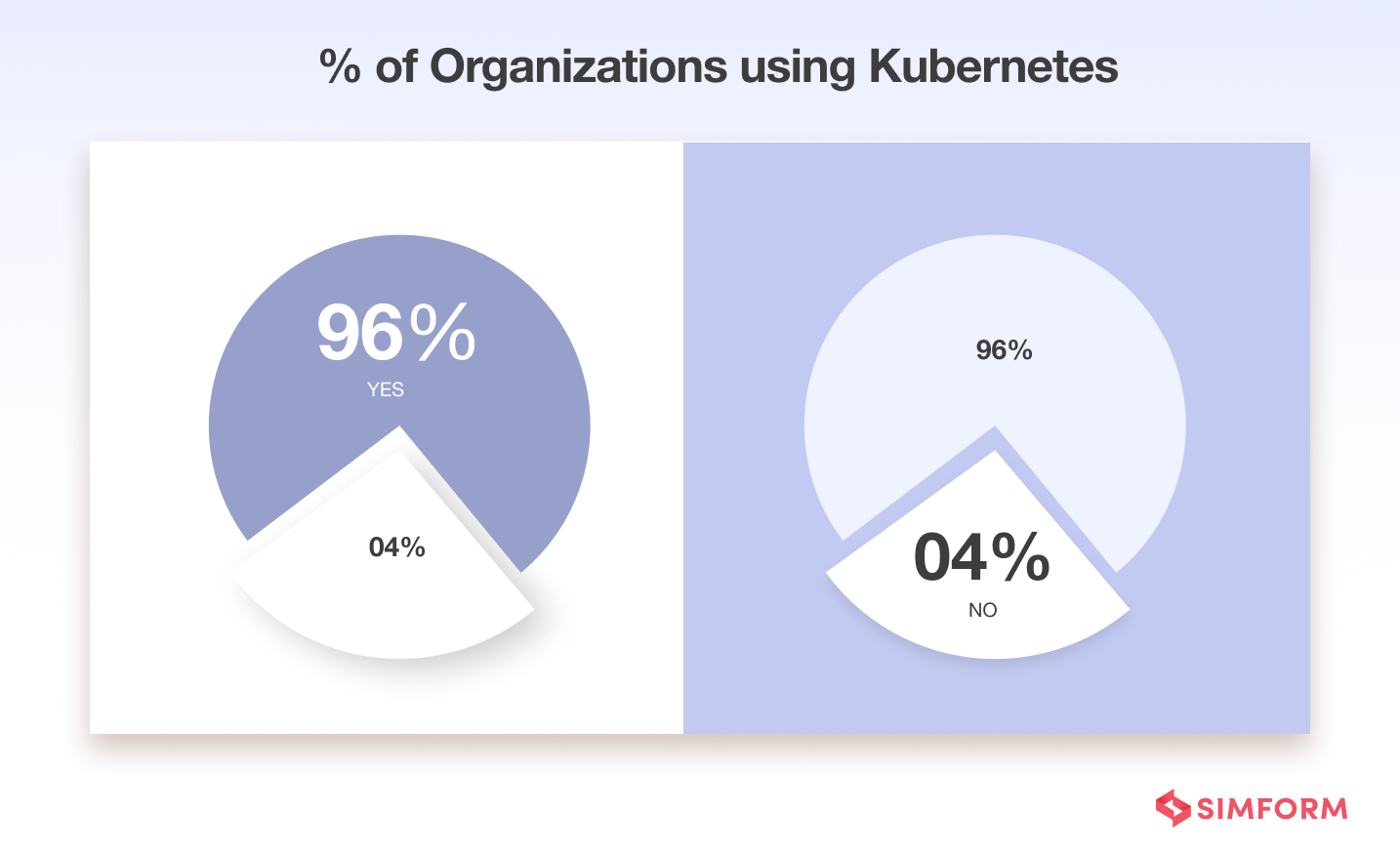
96% of the organizations are either using or evaluating Kubernetes as the preferred container technology.
If you break this number region-wise, the statistics will look as follows:
a. Regions with the highest usage of Kubernetes in production
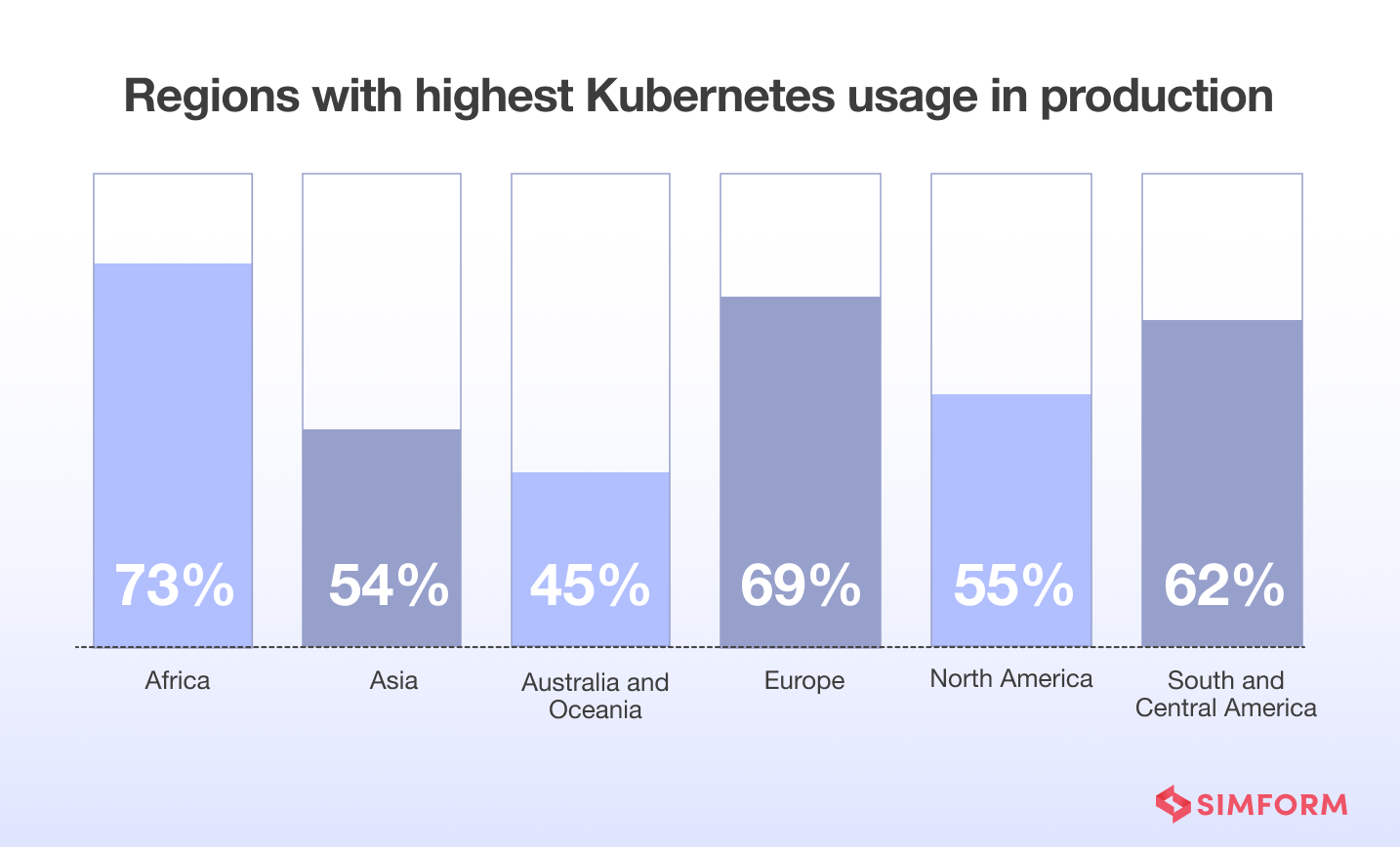
Africa (73%) tops the charts, followed by Europe (69%) and South & Central America (62%).
b. Regions with the highest usage of Kubernetes in test production
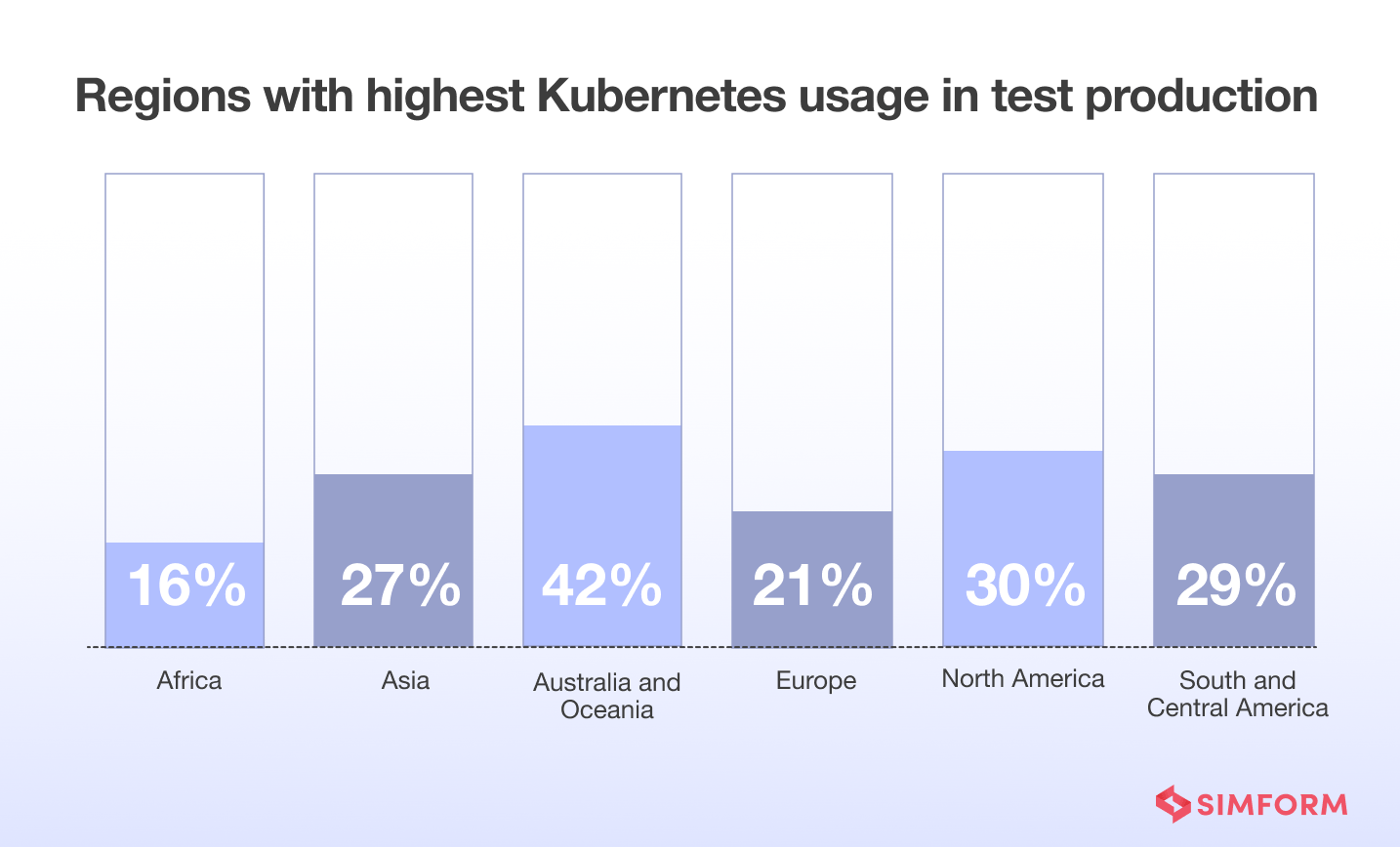
Australia and Oceania (42%) are at the forefront, followed by North America (30%) and South & Central America (29%).
c. Regions with the lowest Kubernetes adoption
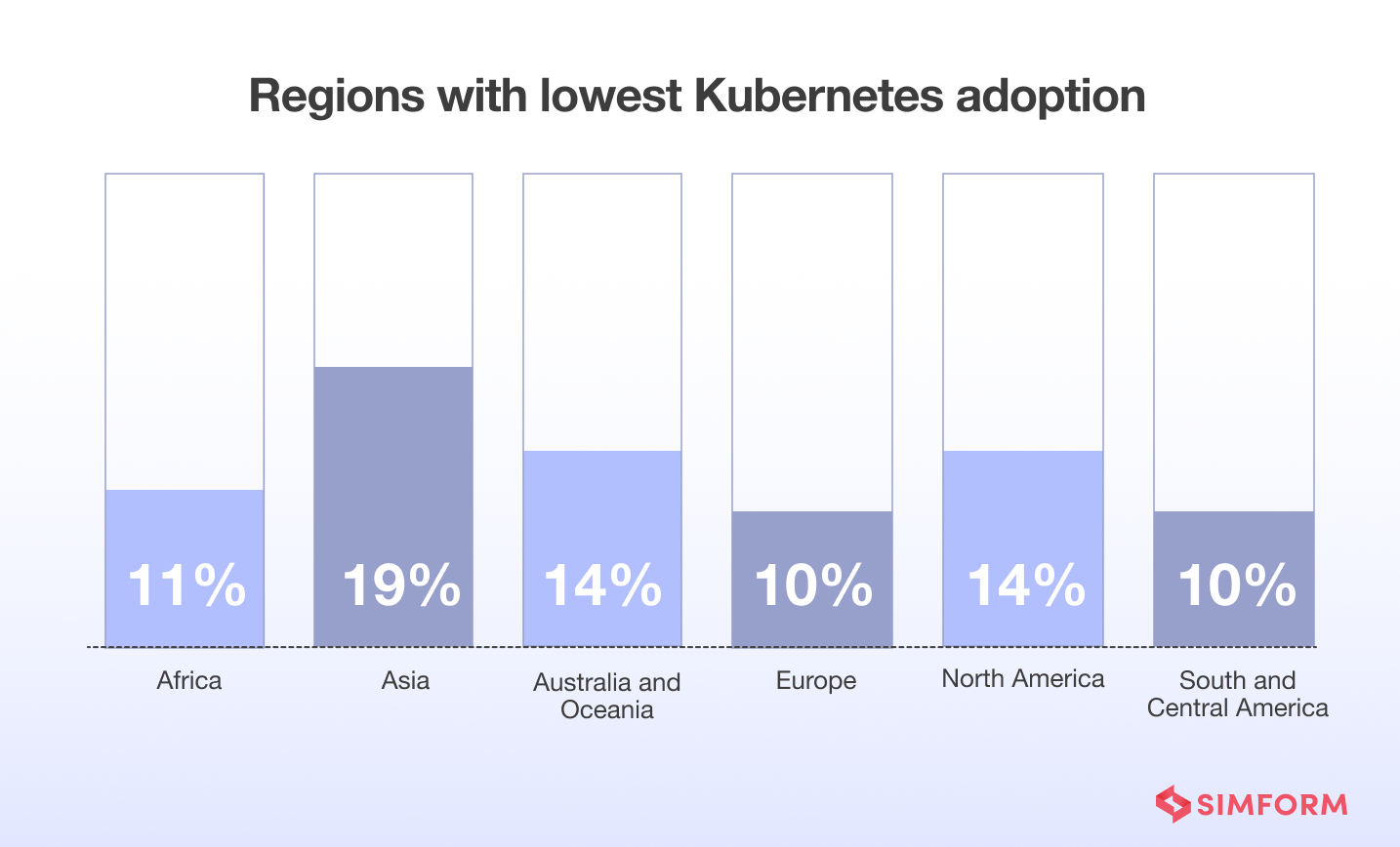
11. The rise of Kubernetes pods and auto-scaling
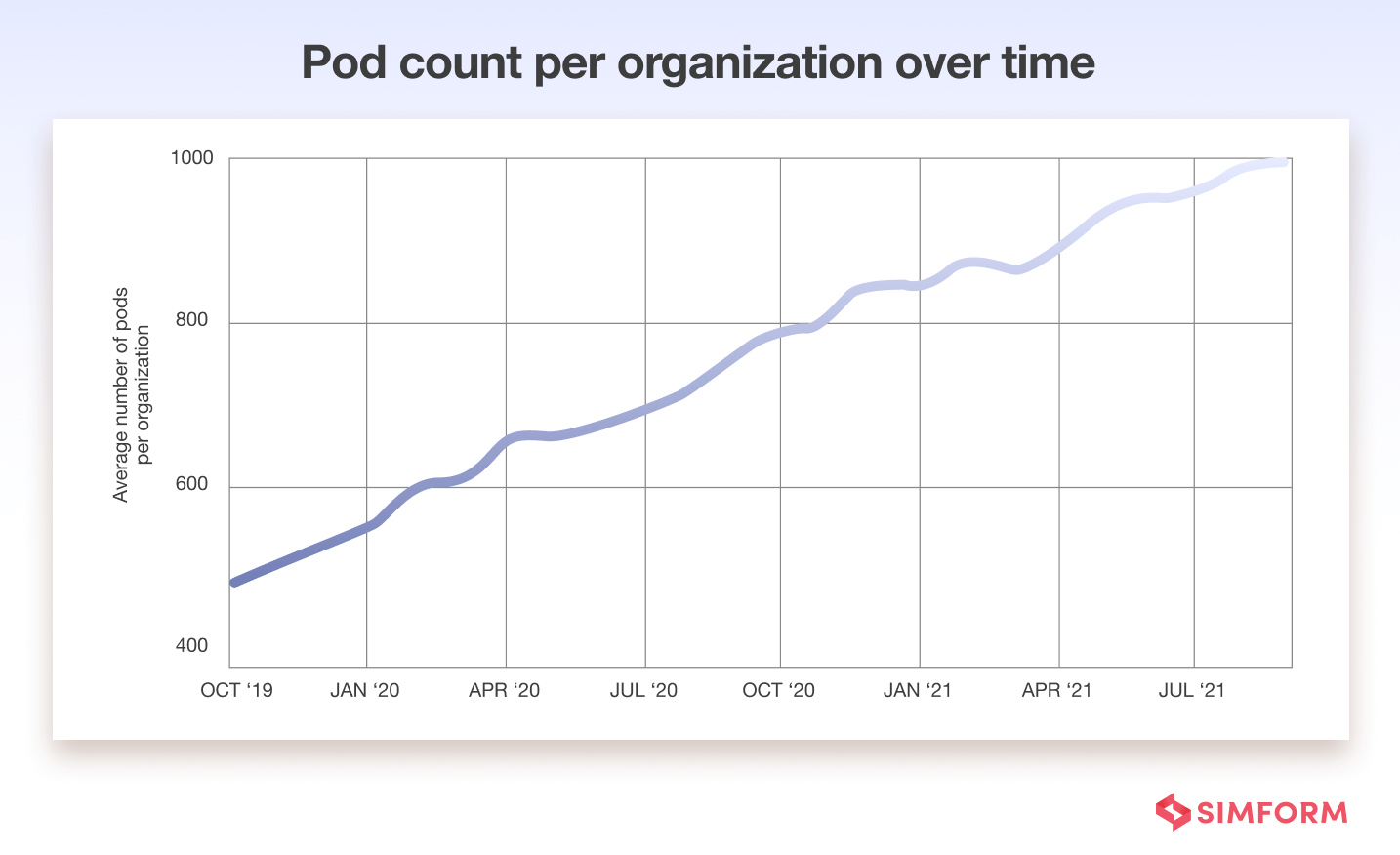
The organizations using Kubernetes in production to scale their environments are using double pods on average compared to the past two years, showing that Kubernetes adoption has increased significantly.
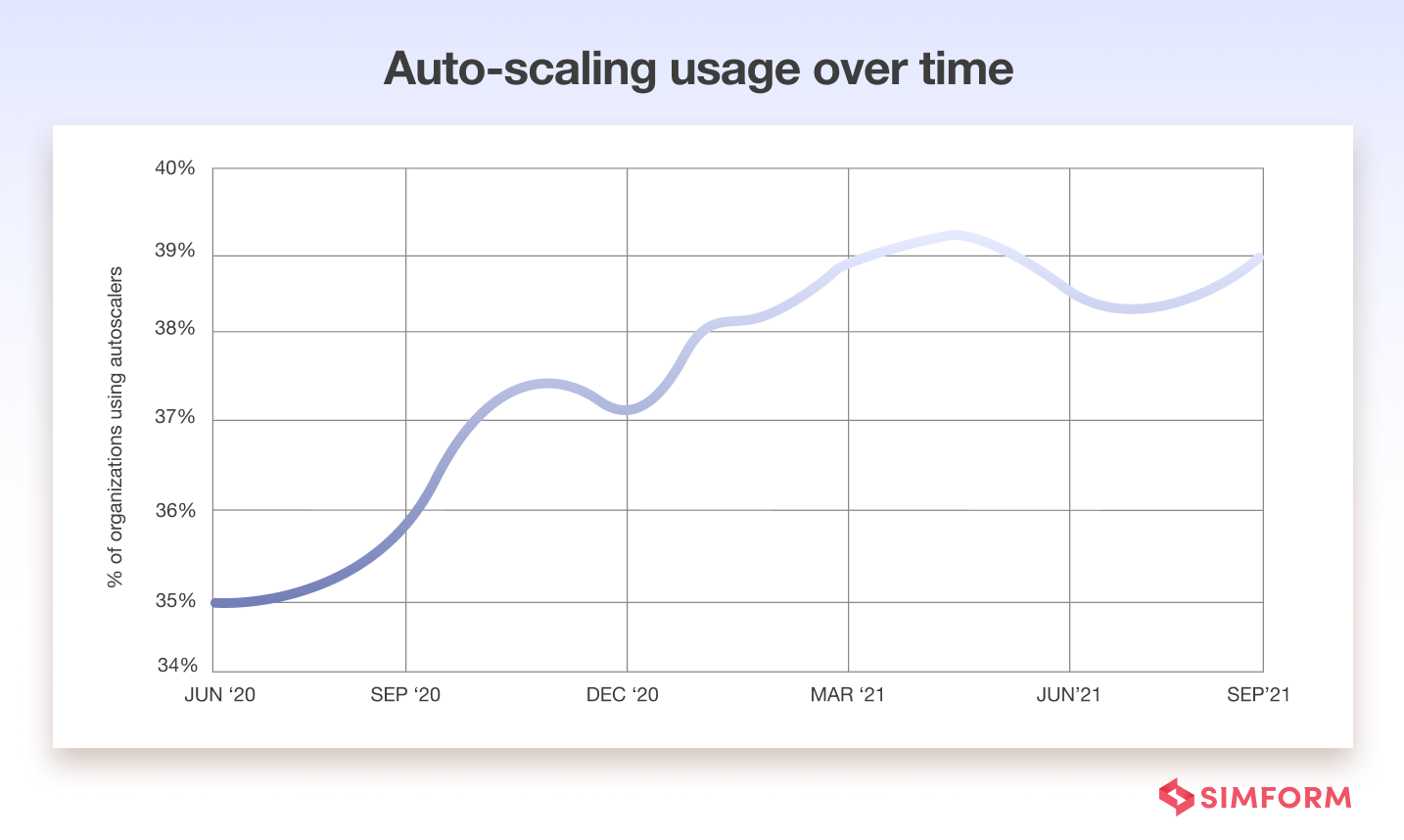
12. Managed Kubernetes service adoption
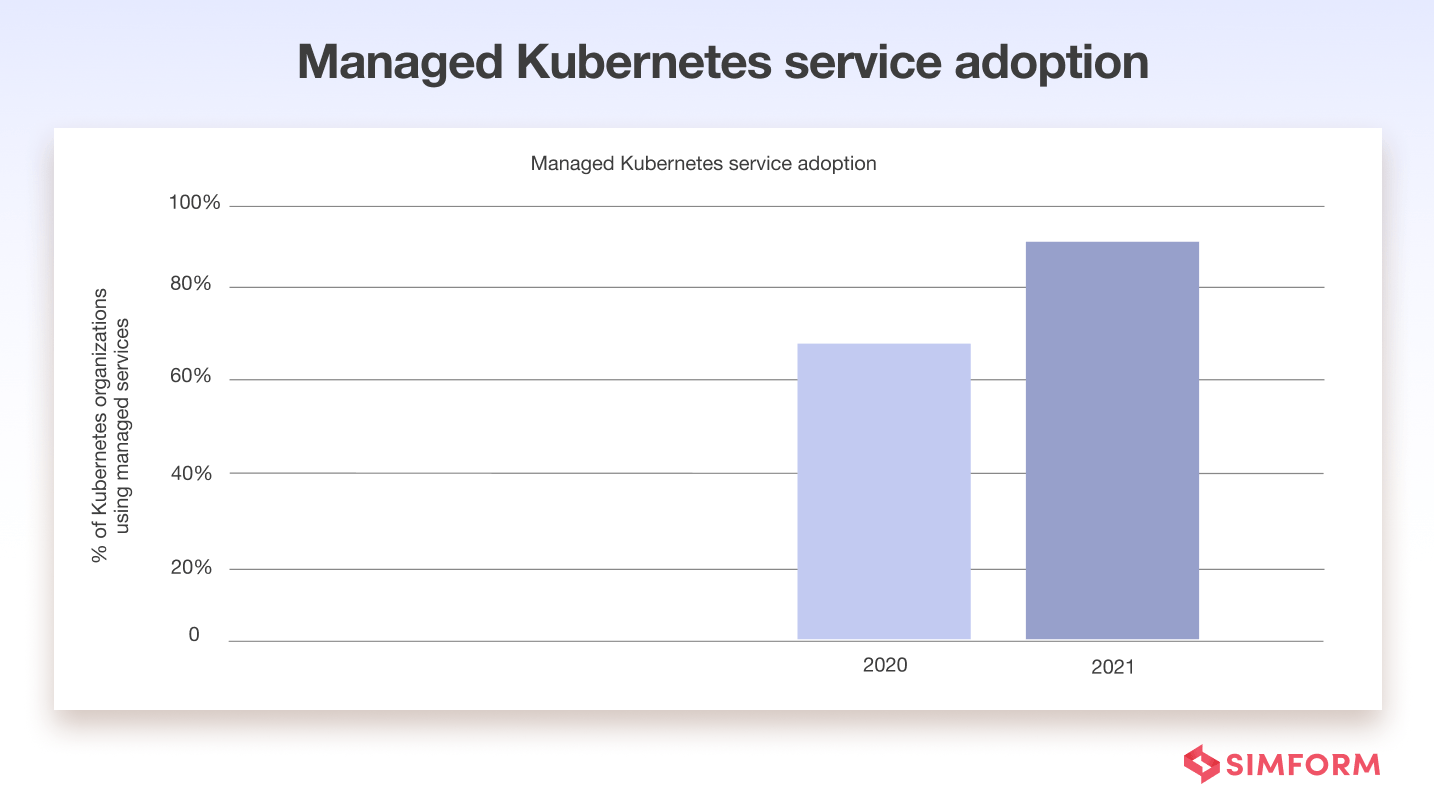
90% of the Kubernetes users leverage cloud-managed services like Amazon Elastic Kubernetes Service (EKS), Google Kubernetes Engine (GKE), and Azure Kubernetes Service (AKS) instead of running self-managed containers to build highly available, scalable, and performant apps.
13. Host density of Kubernetes is 3X higher compared to ECS
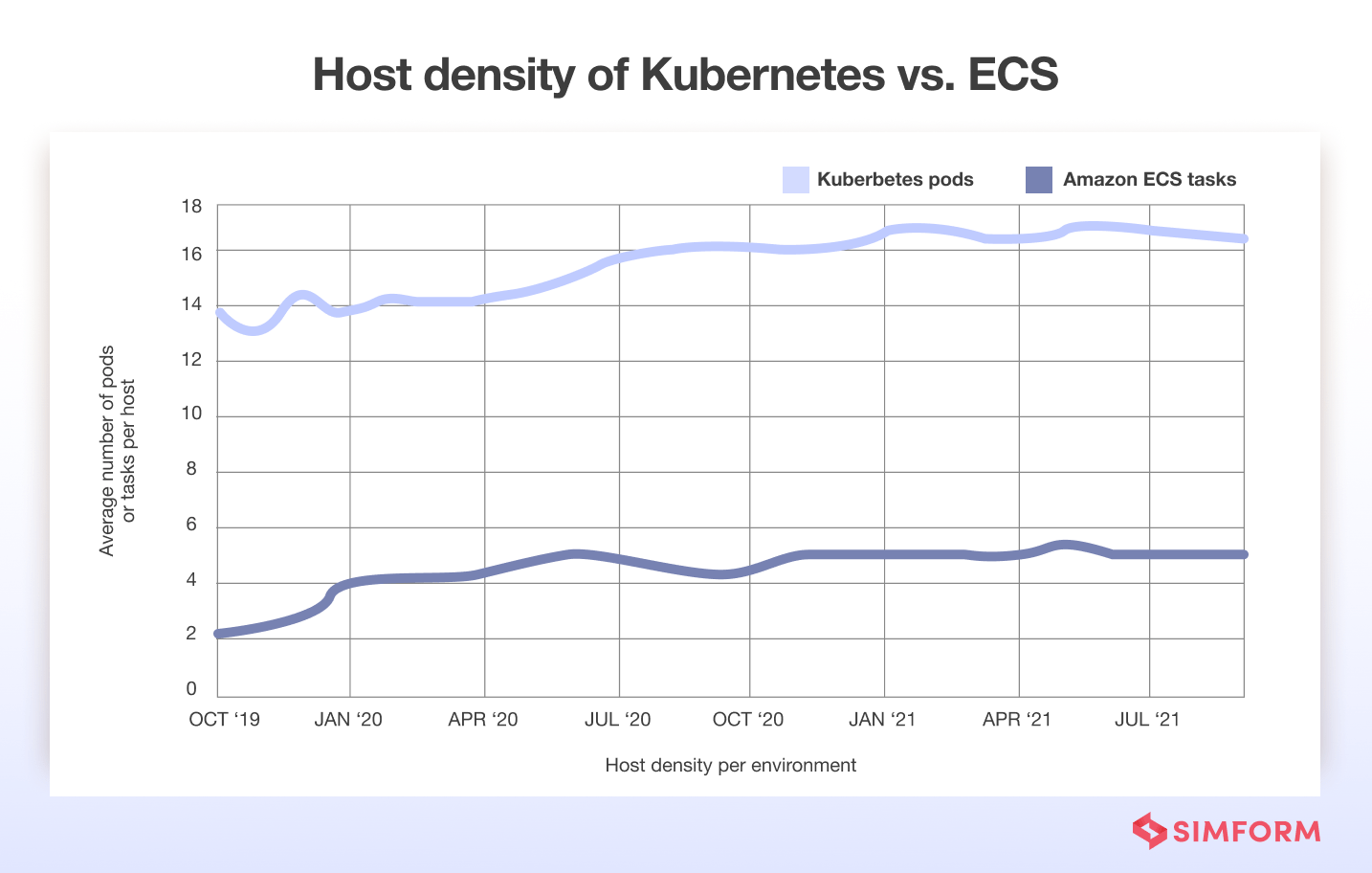
If you compare Kubernetes and ECS on the scale of host density, Kubernetes can run 16 pods/host, while ECS can run 5 tasks/host on average. So, the host density on Kubernetes is 3X higher than ECS, showing its ability to optimize resource utilization.
14. AWS ECS user’s workload management pattern
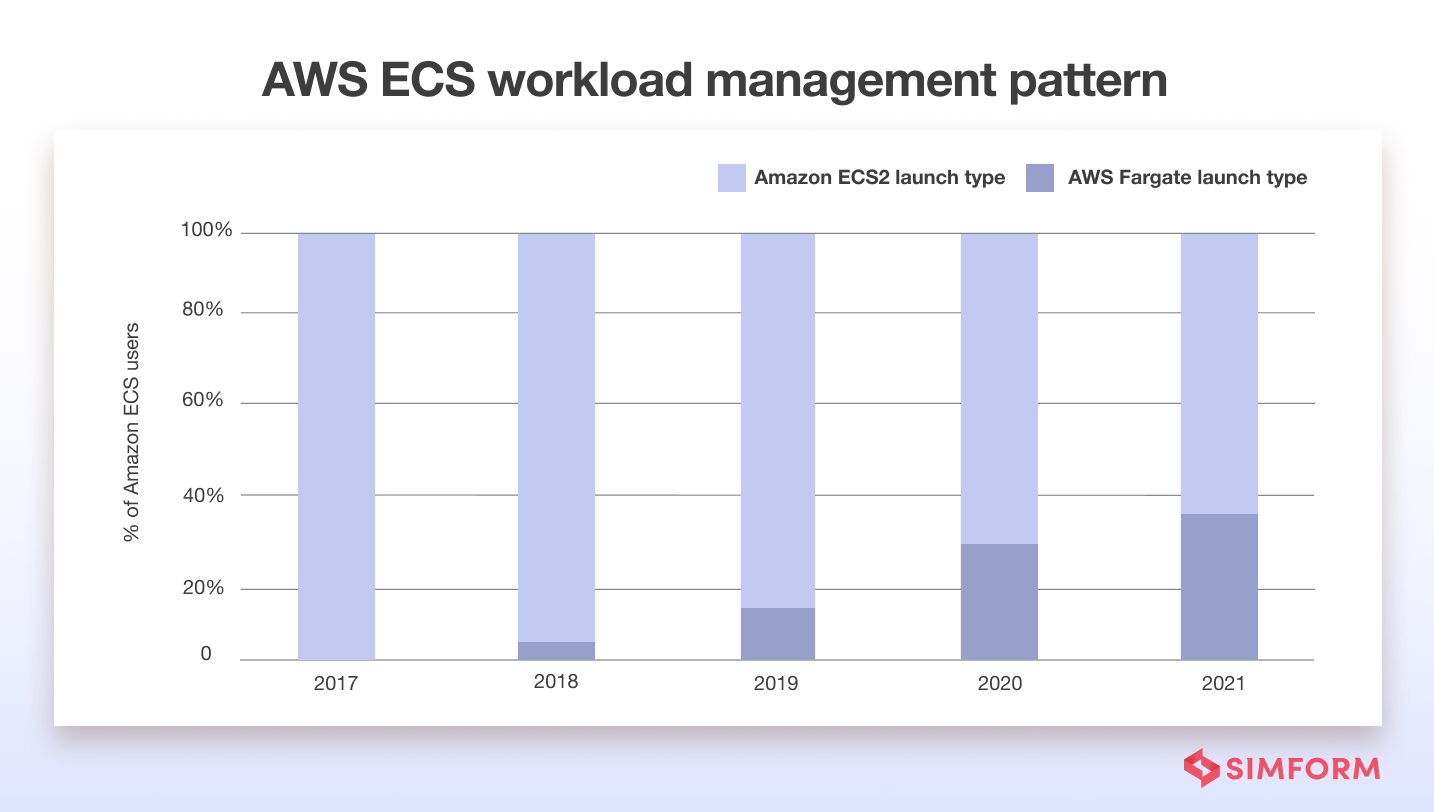
Organizations using Amazon ECS (Elastic Container Service) gradually shifted their workload from AWS Fargate to EC2 after 2017. While in 2017, 100% of ECS users were on EC2, in 2021, it dropped to 60%, with the remaining 40% captured by AWS Fargate, which shows the preference for container workload management is changing.
Conclusion
There are many trends related to containers right through the curated report suggesting one obvious thing is that containers are the IT industry’s future. The primary reason for containers’ is the business benefits they bring to the table, such as faster deployment and less time-to-market. Containerization will be the topmost priority of organizations seeking a digital transformation. So, it’s time to take action and adopt containerization as a core part of your business strategy.